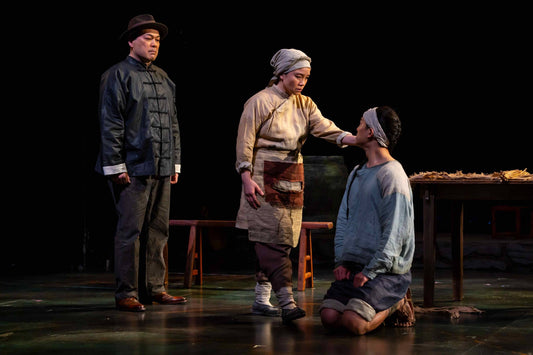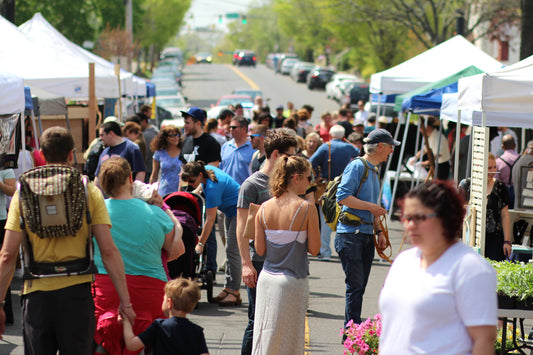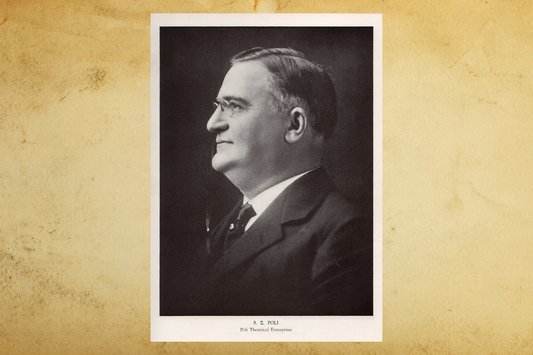Almost 100 years to the day after its Hollywood premiere on October 30, 1921, The Sheik got a centenary Blu-ray. Cinephiles in general may remember the movie for cementing the status of its star, Rudolph Valentino, as a swoonable leading man. But local movie and history buffs may know of a more tragic association: with the burning of the Rialto Theatre.
It was Sunday, November 27, about a week after The Sheik’s nationwide release, and the silent film was turning out to be a record-breaking sensation. By the time the Rialto’s lights were lowered for that evening’s musical prologue (sung by locals Agnes Conroy and Dr. Frank T. O’Neill), all the seats were filled, with additional patrons standing in the aisles and rear corridor. To enhance the opening scene, which features a seated Valentino somehow rakishly peddling brides for Arab nobles, Rialto staff had rigged an incense burner near the ceiling of the stage to emit an exotic fragrance evoking the movie’s Middle Eastern setting.
An unidentified Yale student in the audience described the horrifying events that followed, as published in the next day’s Hartford Courant:
I was sitting in the balcony when I saw some smoke coming from the stage. The next moment I saw a sheet of flame from behind the curtain on the stage and heard a noise as if a fire extinguisher were being used. Some people down in front on the orchestra floor rose to their feet and started to run towards the rear. In a moment people from the orchestra floor roared above the furies of the rising panic, “Sit down, sit down!”
A cloud of smoke that rapidly grew thicker and thicker as it poured out over the audience threw the theater into an indescribable state of hysteria. Everybody yelled, “Take your time, take it easy” and at the same time rushed forward.
Suddenly a door in the balcony that had been closed was opened, and here is what followed. A heavy draft was created and seemed to intensify the flames. They shot out in long streaks from behind the screen and the curtain collapsed in flames. There was a tremendous flash of fire that spread like a cloak all over the heads of the audience below, leaping quickly up towards the balcony. The hysterical madness of the audience then reached its height. Everybody lost his head. Women shrieked like bunnies and I felt myself going down beneath the surging mass. Men took dives from the balcony and from windows. I got away with my hair singed and minus a hat and a shoe.
The same could not be said for sophomore Allen Keith, who succumbed to burns suffered as he returned to the building to rescue several women and children. Members of the Yale football team also aided in rescue efforts, as did a man who was visiting New Haven from Hartford. He described rushing into the theater and finding that “the people trapped inside had very little chance, I was told that some were trapped under the rush to escape…” As doctors provided aid on the sidewalk, “dozens were carried away, their face and arms swathed in bandages.” Some were “hysterical,” others “stunned.”
According to a followup in the December 28 edition of the Courant, nine theater-goers lost their lives in the blaze and well over a hundred were burned, with at least 80 receiving treatment at the city’s hospitals or Yale’s infirmary. After a month’s investigation into the causes of the fire, the New Haven coroner issued a report laying blame at the feet of the city’s building inspector for failing to enforce codes; the theater’s manager for recklessness; and the head of the company that owned the theater for failure to obey state and city laws. Manslaughter charges were filed against the theater manager, whose conviction was contested on appeal, with the ultimate outcome unclear.
The building itself, which began as the College Street Church in 1848, was lost. It had been purchased in 1895 by Yale, which filled it with the debating society and music school until selling it to Rialto some 20 years later. In 1924, three years after the fire, the razed site sold for $375,000 to a New York City developer who, as of March 10, 1926, turned it into the elegant and reportedly fireproof Roger Sherman Theater. After a downward slide, the space was revived and reborn as the Palace Theater in 1983 and, after another period of decay, as College Street Music Hall in 2015—each of them a phoenix rising from the ashes of the Rialto.
Written by Nancy McNicol. This updated story was originally published on October 28, 2021.







